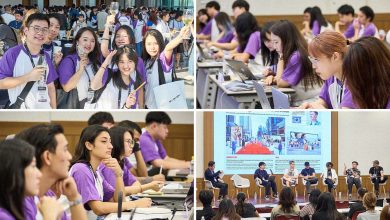SYDNEY, AUSTRALIA — A new study by R/GA Australia, an advertising company leveraging technology and creativity, has highlighted a critical flaw in how current digital experiences are built: they are still tailored to “Digital Adopters” rather than “Digital Natives.”
“The Gen One Report,” the first-of-its-kind research, draws from insights from over 1,500 Australians aged 15 and above, using diary studies, in-depth interviews, and quantitative analysis. It explores the digital divide of expectations and how they should dramatically transform how we design digital interactions.
The report’s findings center on how the digital landscape has been shaped for and by “Digital Adopters,” individuals who were not born into the digital world but have adapted to it over time. This has led to direct translations of physical experiences into the digital realm and decades of incremental innovation.
Shifting design priorities is imperative to adapting to the changing demographic landscape dominated by “Digital Natives.” R/GA’s research shows that adhering to outdated design approaches risks alienating Gen One, who have elevated expectations of technology. Interestingly, the research suggests that by designing for this group, everyone can benefit from it. This approach ensures no one is left behind while advancing everyone forward, recognizing Gen One as the first generation in a new digital age.
This is particularly important as our daily digital tools — such as apps, websites, and government services — are currently designed with Digital Adopters in mind rather than catering to the Digital Natives shaping the landscape today.
Re-thinking digital design
From digital literacy to digital empathy, key findings include:
- Gen One’s optimism and anxiety: Digital Natives are optimistic about technology’s potential to enhance their lives yet are more likely to be worried about the negative impacts on their well-being compared to Digital Adopters.
- Content consumption and well-being: Gen One prefers short-form, easily consumable content. However, this can contribute to feelings of anxiety and distraction. They seek a balance between technology’s benefits and drawbacks.
- Privacy, trust, and ethical concerns: Establishing trust between governments and Australians is vital in the age of emerging technology. Digital Natives, though accustomed to online information sharing, have major concerns about how government data is handled. They worry about security gaps and demand more robust assurances for their credentials, stressing the importance of better trust-building practices.
Strategies for engagement
- Multi-generational design architecture: Moving from vertical to horizontal service structures is important to support individuals effectively when needed. Gen One’s preferences vary by life stage, requiring tailored features and tactics to cater effectively to these different stages.
- Hedonic and emotional design: Moving beyond standard UX best practices, there’s a need to include enjoyable and emotionally impactful elements in digital interactions to create not only seamless but meaningful experiences.
- Hyper-personalization and gamification: Moving from creepy to cool, connected services should provide people with all the services they need with minimal friction. Digital Natives thrive on personalized and gamified content; tailored experiences incorporating achievement-oriented elements can help maintain their interest and trust. And ultimately drive the positive behaviors that government and brands are ultimately measured by.
Tish Karunarathna, Executive Director of R/GA Public Practice, added, “We set out to understand what makes Gen One different, so everyone can benefit from a digital-first world. Persisting with a Digital Adopter-centric design approach risks alienating Gen One and limiting technological adoption. It’s time for us to learn from Gen One to accelerate toward a more inclusive digital future.”
Victoria Curro, Managing Director of R/GA Australia, said, “Australia’s largest demographic is the one that’s never known a world without the internet. We have to evolve the user experience to address the expectations of a generation born with technology, and in doing so we’ll create a more inclusive and accessible future for everyone.”
View “The Gen One Report“ here.










